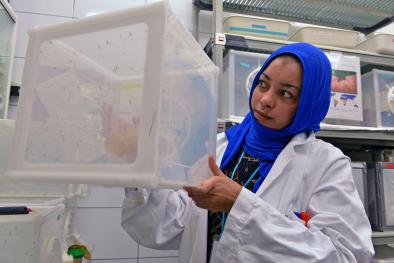Science Source
Global risk model for vector-borne transmission of Zika virus reveals the role of El Niño 2015
- Quantifies the impact of climate variability on Zika virus (ZIKV) transmission by two mosquito vectors with distinct characteristics: Aedes aegypti and Aedes albopictus
- Uses observed climate data to dynamically drive a two vectors–one host R0 epidemiological model
- Results indicate that temperature conditions related to the 2015 El Niño climate phenomenon were exceptionally conducive for mosquito-borne transmission of ZIKV over South America
- States the virus is believed to have entered the continent earlier in 2013
- Finds the conducive temperature conditions in 2015 over South America can be related to the superposition of climate change and decadal and year to year variability
- Concludes that such a large ZIKV outbreak occurred not solely because of the introduction of ZIKV in a naive population, but because the climatic conditions were optimal for mosquito-borne transmission of ZIKV over South America in 2015

ZIKV transmission risk anomalies. (A) Annual R0 2015 anomaly (percentage) with respect to the 1950–2015 period. (B) Standardized R0 anomalies with respect to the 1950–2015 period. The indices have been calculated for the South American continent; A shows the spatial domain definition. The solid line and the colored bars depict raw and linearly detrended anomalies, respectively.
Related Content
Science Source
| The Lancet
El Niño and climate change—contributing factors in the dispersal of Zika virus in the Americas? - The Lancet
Shlomit Paz, Jan C Semenza
Headline

Apr 7, 2017 | Carbon Brief
Zika outbreak ‘fuelled by’ El Niño and climate change
Science Source
| MMWR. Morbidity and Mortality Weekly Report
Vital Signs: Update on Zika Virus–Associated Birth Defects and Evaluation of All U.S. Infants with Congenital Zika Virus Exposure — U.S. Zika Pregnancy Registry, 2016
Megan R. Reynolds, MPH; Abbey M. Jones, MPH; Emily E. Petersen et al
Headline

Apr 4, 2017 | The New York Times
One in 10 Pregnant Women With Zika in U.S. Have Babies With Birth Defects


